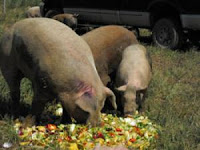 This summer, the Groundwater Blog will be profiling participants of the Groundwater Guardian Green Site program. The program recognizes green spaces (golf courses, parks, nature areas, educational and office campuses, etc.) for using groundwater-friendly practices to maintain the site. Find out more.
This summer, the Groundwater Blog will be profiling participants of the Groundwater Guardian Green Site program. The program recognizes green spaces (golf courses, parks, nature areas, educational and office campuses, etc.) for using groundwater-friendly practices to maintain the site. Find out more.
Site: Laytonsville Golf Course, Gaithersburg, Maryland
Site Manager: Galen Evans, Golf Course Superintendent
Tell us a little about your site and its history.
Located in almost the center of Montgomery County, a suburb of Washington DC, our golf course was built in 1971 and is an original course to the Montgomery County Revenue Authority. We have always been a public golf course and we are usually busy, as we typically have between 40,000 and 45,000 rounds played each year.
What’s the most unique feature of your site?
The most unique feature on our property has to be that the spring near our 8th hole is listed as the original headwaters of Rock Creek. Rock Creek leaves our property and meanders all the way through Washington DC where it empties into the Potomac River and eventually into the Chesapeake Bay.
What groundwater-friendly practices are you most proud of?
I'm most proud of the amount of native areas and stream buffers we've implemented around the course over the past several years. Native areas, or low-maintenance areas, are left to grow naturally and receive virtually no inputs other than being mowed down once a year. These areas of dense turf with deep, fibrous roots, help to filter sediment, nutrients, and other pollutants out of the runoff before it enters streams and leaves our property. These areas also help to filter runoff as it permeates the soil and moves down to our groundwater.
What would you tell another site manager about being a Green Site?
I would tell anyone in charge of maintaining a property to consider becoming a Green Site. This program really helped me to validate that the practices we employ at our course are benefiting the local environment, especially our groundwater. During the application process, I was also given a better understanding of other ways wee can improve our environmental impact and groundwater protection.
What’s the best part about your job?
The best part of my job is that I get to be outside every day. It feels great to be able to balance providing quality course conditions to our golfers and also protecting our natural resources and the environment.
________
Galen Evans has been the Course Superintendent at Laytonsville Golf Course for six years. Find out more about Laytonsville Golf Course at www.mcggolf.com/Courses/Laytonsville.aspx or gevans@mcggolf.com.










